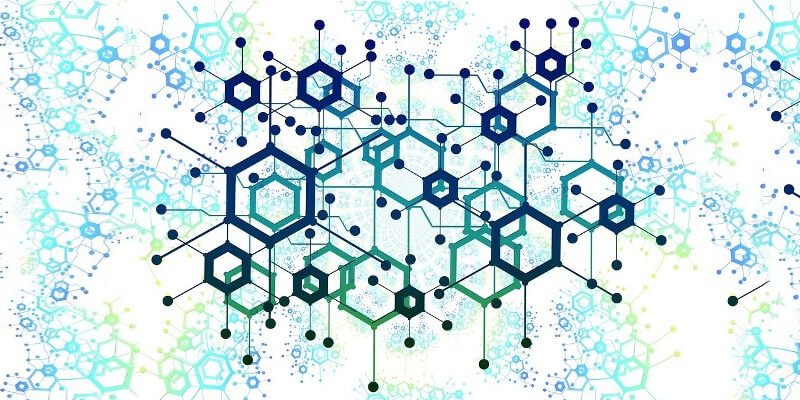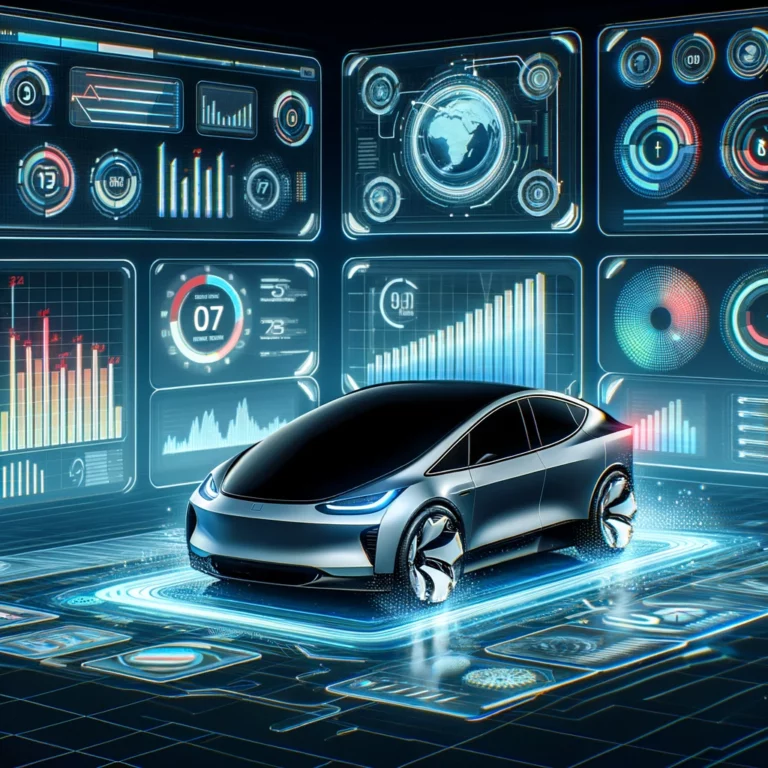Climate protection and digitization – two topics that every company has to deal with these days. Anyone who continues to put off these issues will soon no longer be competitive. So the keyword is: twin transformation.
This means the joint implementation of digitization and sustainability strategies. But what does digitization actually have to do with climate protection? And how can innovative technologies help to protect the environment? Read this article to learn more about it.
WHAT IS DIGITAL SUSTAINABILITY?

Digital sustainability makes use of the instruments of digital transformation, e.g. B. the improved connectivity and the Internet of Things (IoT) to relieve the environment and support sustainable business processes.
Digital technologies are the key to sustainable business. For example, smart building technologies can help reduce the carbon footprint of parts of our built environment by optimizing energy use using IoT connectivity and artificial intelligence (AI). Networked production can also reduce the use of materials.
In industry alone, there are numerous ways in which digital technologies can be used for more environmental protection, from virtual prototyping to digital circular economy to drones and sensors.
In addition to the environmental protection aspect, the term digital sustainability refers to the ongoing, i.e. long-term, digitization of a company. In order for sustainable digitization to succeed, the employees in the various departments not only have to learn to use digital tools, but also have to be trained to develop and innovate in the field of new technologies.
The introduction of sustainable digitization is a long process, at the end of which a traditional company is able to digitally design analogue processes and business models.
THE WAY TO MORE CLIMATE PROTECTION

The implementation of sustainable digital structures in the company is an important step towards climate protection. Already at this point, IT professionals should consider the various areas that have an impact on the environment.
These include, for example, ensuring energy efficiency, managing e-waste, using paperless transactions, overall system efficiency and supply chain logistics.
If you want to achieve goals, you need a suitable strategy. So do companies that want to focus more on climate protection.
| As with any change, it’s important that the entire organization pulls together and that IT professionals don’t work in isolation. |
For example, the IT department can take control of digital technologies and employee safety, marketing can take care of environmental justice and community engagement, while logistics oversees the carbon footprint of the supply chain and responsible sourcing of raw materials.
Digital technologies can also help solve problems such as packaging waste generation. Reusable transport packaging can provide data on location or condition, for example. These insights can then be used to further reduce or improve the packaging material so it can be reused more often.
Set up a data platform to log and track all successfully completed steps. At the same time, such a platform offers you the opportunity to analyze ESG-related information from the individual areas and the entire value chain.
HOW DIGITIZATION SUPPORTS THE CIRCULAR ECONOMY

The fourth industrial (digital) revolution has the potential to drastically reduce resource consumption and pollution. It can make processes more efficient, as in big data analytics , or it can easily replace physical supply chains, as in the case of additive manufacturing (aka 3D printing). Furthermore, digital technologies such as artificial intelligence , 5G and blockchain can increase the impact of environmental measures.
At the same time, the existing physical supply chains must become more circular and companies must say goodbye to the wasteful idea of infinite resources.
DEFINITION: WAS IST CIRCULAR ECONOMY?
Circular Economy is a counter-model to the traditional linear economic approach, which relies on the reusability and recyclability of products. All materials used are therefore part of a cycle.
The aim of the circular economy is to conserve limited resources and increase the added value of products. By avoiding waste and pollution and by regenerating natural systems, the impact on the environment is also minimized.
One of the most important elements of the circular economy is the reparability of products. Repairing hardware is sustainable in three ways:
- ecological because it fights the “throw away economy”.
- Economic because it allows for a vibrant repair sector, made up mostly of small businesses and creating jobs
- socially because it helps people save money.
HOW ARE DIGITALIZATION AND CIRCULAR ECONOMY RELATED?

Since the circular economy is based on recycling , responsible use of resources and reuse, among other things, several key questions arise:
- How can you verify that a product has actually been manufactured sustainably?
- How do you know that a product needs maintenance?
- From what point in time is a reprocessing of the product necessary?
Answering these questions plays an important role for the recycling economy, since the aim is to keep a product in use for as long as possible and thus to keep the energy and resource consumption that would arise in a new production as low as possible.
Digitization can also help here: Sensors and RFID labels can provide information about the origin of a product. A platform specially developed for the circular economy collects information about the condition of the product and can thus signal in good time when reprocessing is necessary. IoT connectivity and remote diagnostics combined with artificial intelligence can also indicate when preventive maintenance is required.
However, the circular economy does not just begin when the product is on the market and already in use. It already takes effect in the design and production phase. The switch to a circular economy accordingly means a drastic change in the business model of a company.
Design, production and after-sales processes have to be redesigned. A digital networking of the different actors is necessary for the successful redesign in any case.
A study by Accenture has found that ten technologies in particular support the transition to a circular economy. These ten technologies are:
- Cellular Technologies
- Machine-to-Machine Communication (M2M)
- Cloud-Computing
- Social networks
- The “Big Data” analysis
- traceability and repatriation systems
- 3D printing
- Modular construction technology
- Advanced recycling technologies
- Life and materials science technologies
What conditions must be met so that a product or individual parts of it can be reused? Here, social networks facilitate the exchange, especially with regard to the joint use of a product.
Online repair cafés also enable direct networking with the customer, who ideally can repair the product themselves without much effort. Already in the development phase, companies should ask themselves how easy it will be made for the user to repair the product. This not only prevents the product from being thrown away, but also saves on the transport route.
Machine-to-machine communication together with cloud computing can contribute to the optimization of industrial reprocessing, for example in the form of traceability and return systems.
Blockchain technology supports the recoverability of certain product materials (e.g. metals or plastics) by sharing information about the material composition in the value chain.
The digital transformation as a whole is considered a pioneer for resource-saving material cycles. The following three sectors in particular play a decisive role in digitization:
- the raw material processing industry
- the metal industry
- the packaging industry, which works with high proportions of plastic
According to a study by the Federal Ministry for the Environment , no other key environmental market would benefit as much from digitization as the circular economy. The problem: No other sector has been as badly positioned as the circular economy.
PREREQUISITES FOR A FUNCTIONING CIRCULAR ECONOMY

When it comes to implementing a more environmentally friendly way of doing business, the responsibility does not just lie with companies. Politicians must also create the right conditions so that companies can use digitization to achieve their climate protection goals.
European policy must enable companies to use circular economy models and develop environmentally friendly technologies. For example, small businesses can only offer hardware repairs if they have access to the data and information needed to perform the repair. The so-called “right to repair” is of crucial importance here.
If you own an iPhone, you have no choice but to use IOS . The same applies to Google’s Android operating system. But not only smartphones, also other electrical devices are usually completely in the hands of a manufacturer. The consequences are little to no competition, which reduces the pressure to constantly improve the product.
When electronic devices are unlocked for third-party software, companies can compete and develop better applications for the respective devices. For example, European regulators could support openness in both software and hardware by clarifying or eliminating liability issues in the event of a software malfunction on a third-party device.
CONCLUSION: EXPAND THE DIGITAL INFRASTRUCTURE
Digitization and climate protection are closely linked. However, many digital technologies have so far only been used hesitantly in Germany. The result: In some places, the digital infrastructure for intelligent climate protection is missing. According to an IDC study , every fifth company has no clear idea of what IT can specifically contribute to building a sustainable corporate structure.
The digital infrastructure must be set up as quickly as possible. This is the only way companies can operate in a future-oriented manner in all areas and remain competitive.
How can you implement a digital infrastructure for sustainable growth in your company? Our experts at DigitaSol have more than 20 years of experience in the field of digital solution architecture. Contact us!



